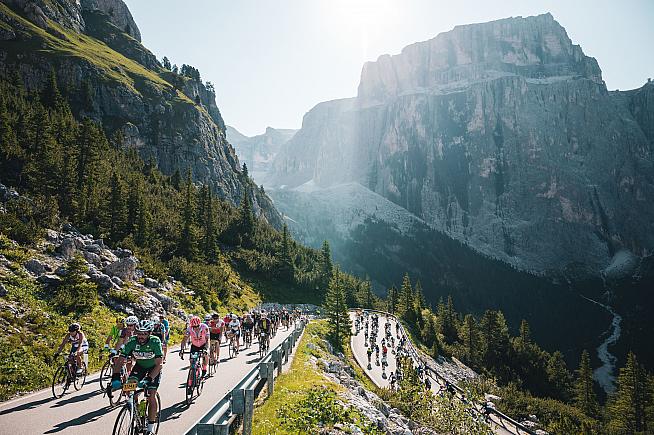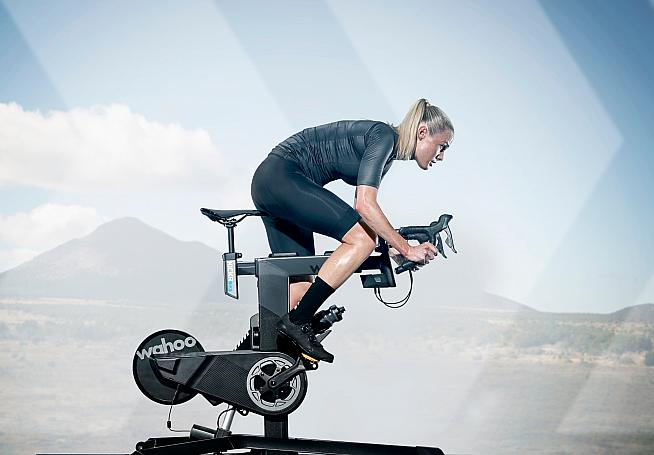Entering a big sportive is easy, but preparing for the challenge can prove more difficult - especially when you're fitting in training around work, family and other commitments.
Whether it's a tough UK event or a European classics like L'Etape du Tour or La Marmotte, you'll enjoy the day more if you're well prepared.
Jakub Novak, former pro cyclist with WorldTour team BMC and now head coach at Pro Cycling Coaching, offers some advice on riders training towards a long sportive.
1. Split Preparation Into Phases
By separating your preparation into phases you'll not only have a sense of purpose with training, but you'll develop your fitness steadily and sustainably. Divide and plan your preparation into 3 different phases - Recovery, Base and Specialised phase.
Before you start your preparation for the upcoming Gran Fondo, make sure you have a minimum of three weeks recovery. By including the recovery phase, you'll reduce both physical and mental fatigue accumulated from the previous season. This will allow you to maintain upcoming preparation for a longer period of time, avoiding long-term overtraining or burn out.

After the recovery phase, include training primarily focused on developing your base fitness. This means improving aerobic fitness with endurance and sweet spot riding and strength through low cadence repetitions. You should also aim to lose unnecessary weight.
Following Base phase you should start with the Specialised phase. This part of the season should be oriented around your strengths, goals and what specific event are you focusing on. Here is where you should really push your limits and include more intense training.
Each of these phases can last from 1 to 3 months, depending on the length of preparation. Usually you should dedicate 4 to 6 months to consistent training if you want to be at your peak fitness.
2. Add Variation To Your Training
To maximise your time spent with training, it's important to perform a different type of training throughout the week with each training day aimed at a different fitness aspect. This will give you an ideal composition of your weekly training.
Adding variation to your training yields more gains in performance and will keep you more engaged and motivated. Training variations can be by intensity, duration, volume or technical aspects.
As an example, one day you should focus on strength training, another day on intensity with a goal to increase threshold within a race or workout, and another you may focus on aerobic endurance by doing sweet spot training within group ride or on your own. This will enable you to perfectly spread your energies throughout the week, enabling you to consistently increase fitness from all aspects.
3. Train Based On Training Zones
Training zones give an athlete a set intensity at which they should be working during a training session.
Training using zones is important because it means that cyclists know they're pushing hard enough during intervals, that they're racing at a sustainable output for the duration required, and that they're pedalling consistently enough on recovery and endurance rides.
Each zone results in different outcomes for race fitness and physiological adaptations. Different training zones relate to the three energy systems the body uses when exercising: oxidative, glycolytic and ATP-PC systems. These energy systems are recruited at different levels of exercise intensity and therefore are developed only at certain zones. If you are focusing on a Gran Fondo (race of +100miles), it'll be important you primarily develop an efficient oxidative system.

You can train using heart rate training zones or power training zones. The second option - power - is more precise and allows you to really add precision to training. To develop your oxidative system, you should be training at Zone 2 and Zone 3. This is roughly 65-87% of your maximum heart rate, or when using power, 65%-95% of your threshold power (FTP).
It's important to regularly readjust your training zones for added precision. Maximum heart rate declines about 1 beat per minute with each passing year, so lower HR zones every year accordingly.
For power zones, perform threshold tests at least every month or two to find out your current threshold power. Finding out your FTP is important for setting up and adjusting your training zones - even if an FTP test is no one's idea of fun!
4. Allow Sufficient Recovery
Recovery is equally important as training day. Recovery is effective because when you recover properly, your body rebuilds to a better position than it was previously. It's this cycle of breaking down and repairing that allows us to train constantly harder without detrimental effects. Other benefits come with reducing the risk of overtraining and giving you a mental break increasing your motivation.
If you are serious about your Gran Fondo preparation, you should allow at least two days at minimum a week to very easy riding or a day off the bike completely. From a long-term perspective, a cyclist should include an adaptation week every 4th week of training, and push harder the other weeks.
An adaptation week is basically an easier week during a training cycle, where the primary goal is to recover from previous training load. Taking a rest (adaptation) week every 4 weeks allows you to push harder and make you fitter in long term.
Placing higher stress on your body for a short period and then recovering will build fitness quicker than doing the same thing week after week. A usual adaptation week should contain about half the volume and intensity of your standard week, with an extra recovery day.
5. Take a Holistic Approach
Approaching cycling training from all aspects is a crucial step to ensure long term growth of fitness. Times are gone when long training hours on the bike were enough. Now we know that it's not just about bike workouts: stretching, yoga, core training, nutrition and mental toughness all play a role in an athlete's performance.
There are countless benefits from a holistic approach. Stretching increases blood flow, decreases feelings of stiffness, and reduces muscle soreness, all of which combined increases performance. Similarly, yoga can help cyclists improve flexibility, build strength and develop breathing techniques.
If you complement this with the right nutrition, you'll further increase the recovery process.
Finally, core training will allow you to transfer more power through the legs, as well as reducing the instance of injury and improving your posture. Incorporating these exercises along with the right diet will give you an incredible edge over your competitors.
For a personalised training plan that will help you maximise your performance at your target events, visit Pro Cycling Coaching at www.procyclingcoaching.com.
0 Comments





